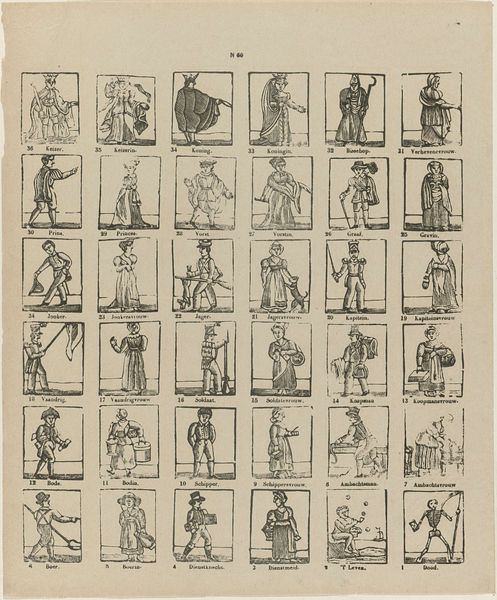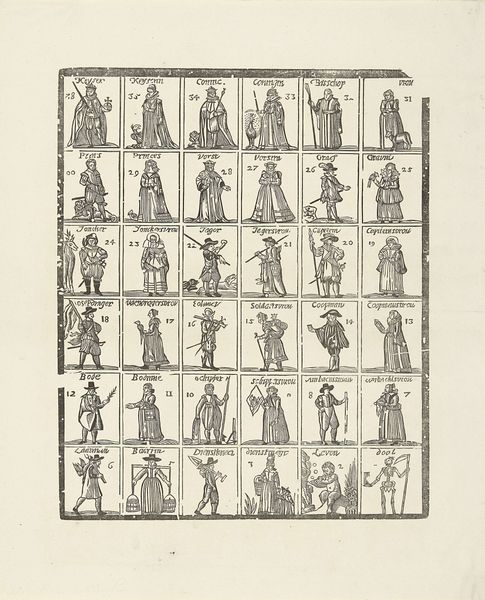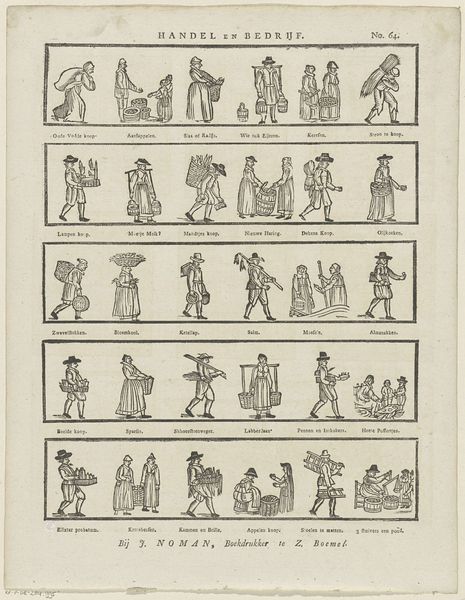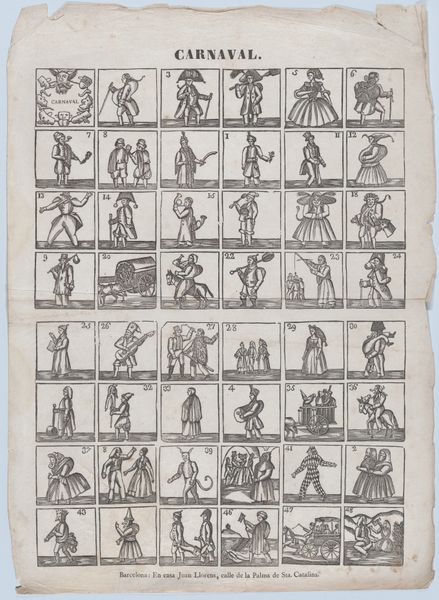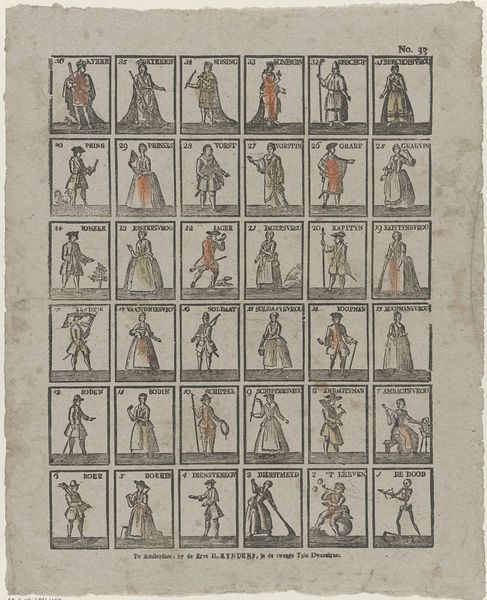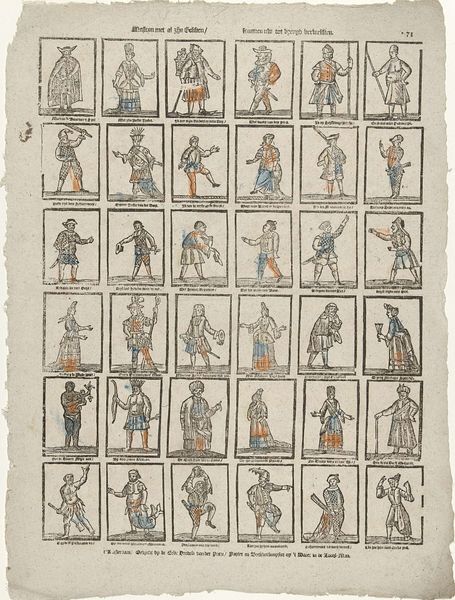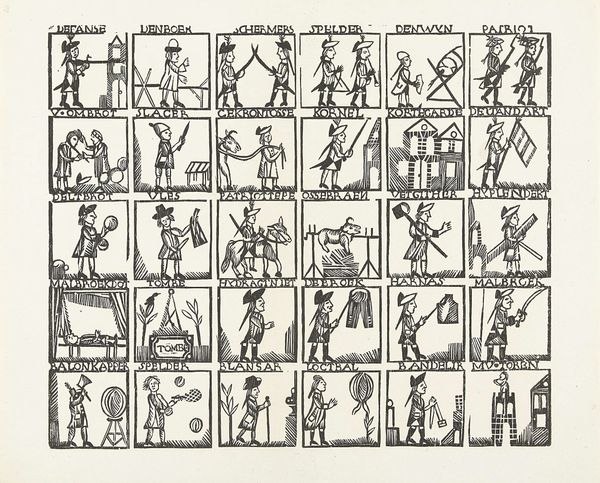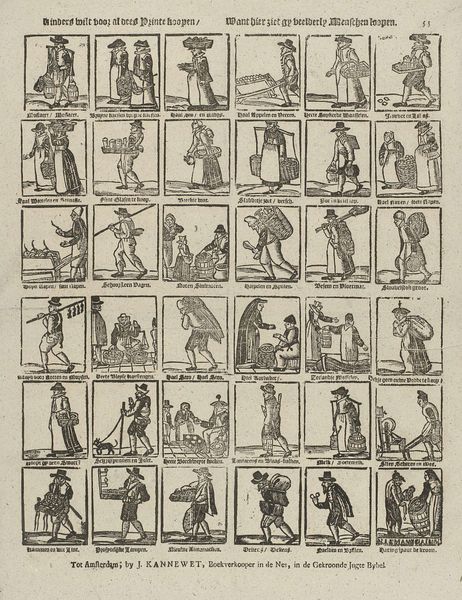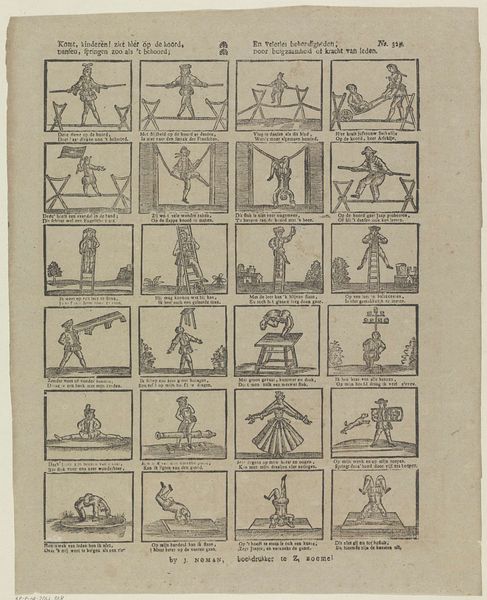
drawing, print, paper, engraving
#
drawing
#
comic strip sketch
#
quirky sketch
# print
#
sketch book
#
figuration
#
paper
#
personal sketchbook
#
idea generation sketch
#
sketchwork
#
ink drawing experimentation
#
sketchbook drawing
#
genre-painting
#
storyboard and sketchbook work
#
sketchbook art
#
engraving
Dimensions: height 405 mm, width 331 mm
Copyright: Rijks Museum: Open Domain
Curator: Looking at this sheet, created between 1795 and 1819, by Jacob Coldewijn, we find an assortment of miniature portraits captured in print on paper. The Rijksmuseum holds this work, known as 'Floskaartjes', within its collection. What's your initial response to it? Editor: It’s like stumbling upon a really elaborate Victorian-era meme! All these little figures, each so distinct and… serious? There's a definite whiff of social commentary but served up with an almost playful charm. I can see how people might've delighted in these at the time. Curator: Absolutely, there's a didactic function intertwined with entertainment here. Coldewijn presents us with a structured overview of social types, almost like a visual encyclopedia of late 18th and early 19th century Dutch society. Note how attire, pose, and even the accessories define each character. The "Kyzer", the "Soldaat", the "Schiffer", and the looming "De Dood" – all rendered with sharp clarity and symbolic weight. Editor: The symbolism is intriguing. Each character becomes a little emblem, instantly recognizable. And that "De Dood" character at the end... bit dark, isn't it? But I suppose reminders of mortality were more commonplace then. I'm really taken by the 'Dienstmeid', that humble rendering is powerful next to all these other ‘important’ figures. The interplay makes for such a fascinating composition. Curator: The inclusion of death brings into sharp relief the fleeting nature of social roles and earthly endeavors, yes, but beyond the surface readings, Coldewijn is using visual shorthand to distill universal human experiences—ambition, labor, and the inevitable equalizer. He is compressing so many layers of collective experience onto a single sheet. Editor: It reminds you that societal structures are human inventions and temporary too. To me the small format is also kind of amazing; these feel so immediate, personal, almost like catching fleeting moments. So it makes it both didactic and intimate in one breath, which is kind of astonishing for a drawing made over two centuries ago! I will carry that with me after viewing it in person. Curator: It certainly allows us a valuable portal into another time. I hope listeners have garnered some new ideas about Jacob Coldewijn and how symbolic observation can bridge the centuries.
Comments
No comments
Be the first to comment and join the conversation on the ultimate creative platform.


